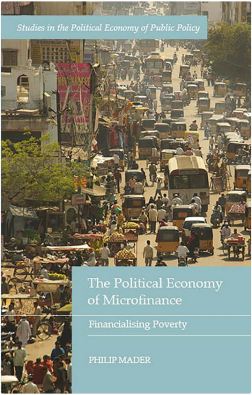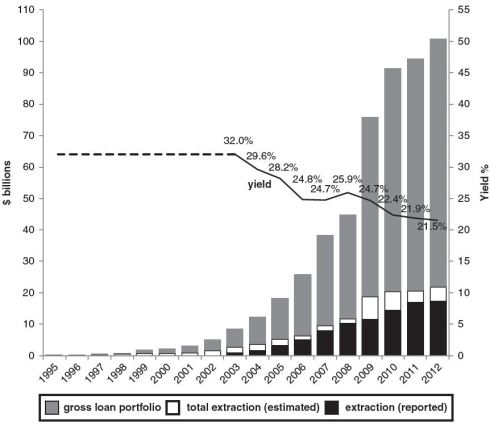You are currently browsing the tag archive for the ‘financialisation’ tag.
Guest blogger Rolf Künnemann reports on new directions for cross-border governance and the challenge of realising Extraterritorial Obligations (ETOs) for human rights.

Human rights and states’ obligations are two sides of the same coin. While states are based on their territories, many of their human rights obligations go beyond borders. These “extraterritorial obligations” are increasingly recognised as essential for human rights to provide the foundations of an international people-based political and legal order.
The ETO movement argues that a focus on human rights beyond borders is key to effectively addressing burning issues like the globalized destruction of ecosystems and the climate, the depletion of resources to the detriment of future generations, the dysfunctional international financie and trade system, the oppression of rural communities, ethnocide, the impunity of transnational corporations, and the human rights accountability of intergovernmental organisations. Read the rest of this entry »

Grenfell Tower symbolises how social housing across Europe has suffered under austerity and the new financial calculus of many local governments (Image: ChiralJon, CC BY 2.0)
Guest post by Sebastian Möller
The crisis of housing in the UK became internationally apparent with the horrific Grenfell Tower fire in June 2017. British cities, London in particular, lack affordable homes, and the condition of the social housing stock in many local authorities at best leaves much to be desired, and at worst is hazardous for the health and life of residents. Grenfell is exemplary for the devastating state of social housing, reminiscent to some of the Victorian era, when Friedrich Engels wrote his impressive ethnography on the living conditions of workers in England. Read the rest of this entry »
The Nobel Peace Prize awarded to Muhammad Yunus and the Grameen Bank in 2006 went practically unquestioned. But since then, particularly over the last years, a public pro-microfinance/anti-microfinance debate has taken a clear shape with well-known lines of argument running both-ways. Many studies have asked: “Does microfinance work?”. And some have more pointedly asked: “Why doesn’t microfinance work?“.
New questions are needed if new answers are to be generated. The Political Economy of Microfinance: Financializing Poverty offers both. Starting from the question “What does microfinance work at – and how?”, it offers new insights into which have particular significance in light of the continually unresolved issues around poverty impact. More than 35 years into the microfinance experiment, the fact is we still don’t know whether microfinance works at reducing poverty – and there are serious reasons to doubt that it does. What we do know (or can know), however, the book argues, is that microfinance works at financialising poverty.
Excerpt from “The Political Economy of Microfinance: Financializing Poverty”, Chapter 2, A Genealogy of Microfinance. (see other excerpts here)
Microcredit allowed the well-institutionalized tool of credit programming to remain inside mainstream development policy, despite a diminished role for governments, and despite the fall from grace of subsidies. In reality, microcredit programming merely shifted the subsidies and state involvement one level “up”: no longer were loans to the poor subsidized and publicly supported; now the organizations which lent to the poor were subsidized and supported.
Sources: World Bank (2001); Maes/Reed (2012); MIX (2013) = Basic MIX MFI Data Set, as of 26 December 2013.
Reliable data on microfinance from before 2000 are very rare. In the mid-1990s the World Bank surveyed the sector and counted over 900 “institutions which offer microfinancial services” (around 735 of them being “proper” microfinance institutions), each serving at least 1,000 clients. The list included seven large banks and one NGO. The survey tallied around $5 billion in outstanding loans. However, the vast majority of MFIs were recently founded NGOs which placed little, if any, emphasis on savings and received over two-thirds of their funding from donors (see Figure below). This group was fast-growing. The World Bank (2001: 4) noted: “Much of the impetus for this growth comes from donor organizations and NGOs embracing microfinance as the latest tool in development and poverty reduction. Due to the increasing availability of donor funds, microfinance institutions have grown rapidly.”
Standardizing microfinance, financially
The World Bank’s decision to support microfinance primarily through its International Finance Corporation (IFC) arm, whose purpose is “financing private sector investment, mobilizing capital in the international financial markets, and providing advisory services” (IFC 2011), affected which type of organizational model would become dominant: MFIs that were willing and able to manage funds that were channelled from mainstream financial markets were favoured. Read the rest of this entry »
It’s lingered quite a while in the pipeline. My book The Political Economy of Microfinance: Financializing Poverty is finally due to hit shelves in June – so says the publisher. This book makes the enigmatic microfinance sector more understanable by tracing its evolution and showing what it is today: a leading edge of financialisation where the world of global poverty meets the world of global finance.
The book is the product of several years of research at the Max Planck Institute for the Study of Societies in Cologne. In 2008, I set out to investigate the connection of microfinance with water and sanitation, which brought me to southern India. Then the Andhra Pradesh microfinance crisis happened, and this eye-opener led me to re-examine microfinance more broadly and fundamentally, critically evaluate it as a highly remunerative but crisis-prone financial system (no longer a development intervention), and challenge its most basic premise: that poverty is a problem of finance.
I’m already excited about whatever reactions (critical, or otherwise) may follow when my ideas, analysis and critique finally reach a broader audience. To give some indications of what the book says and does, I’m posting excerpts from The Political Economy of Microfinance here over the next few months.
Here’s the first. Read the rest of this entry »
April, apparently, is the Month of Microfinance. Prof. Shawn Humphrey, the initiator of the Month (also blogger and passionate educator), kindly allowed me to contribute a provocative analysis of the microfinance sector as serving the interests of the rich, not the poor: financialising poverty. My objective isn’t to provoke people so much as their thoughts – let’s see what happens. The Month of Microfinance is primarily aimed at students; I hope for anything other than complete silence or dogmatic indignation, and an interesting discussion.
(phil)
 CRESC, the Centre for Research on Socio-Cultural Change, is a well-known institution for many working on finance in sociology and political science, as well as researchers in cultural and media politics. By uniquely bringing together researchers from these fields, its annual conference in Manchester is an inspirational forum for unorthodox interdisciplinary exchange, without the numbing genericity of academic mega-conferences.
CRESC, the Centre for Research on Socio-Cultural Change, is a well-known institution for many working on finance in sociology and political science, as well as researchers in cultural and media politics. By uniquely bringing together researchers from these fields, its annual conference in Manchester is an inspirational forum for unorthodox interdisciplinary exchange, without the numbing genericity of academic mega-conferences.
The theme chosen for this year’s conference (5-7 September) proved an excellent basis for taking stock of economies and societies in crisis: “Promises“. One striking feature of this conference was the presence of journalists, NGO representatives, and professionals like asset managers (as spectators and presenters) alongside academics, which added diverse perspectives and precluded overly technical/theoretical debates. (Other conferences may follow this good example.) Being spoiled for choice among the many panels, I mostly attended the ones on finance, missing the more culture-heavy sessions. Therefore, the three observations which impressed themselves upon me relate to the more political-economic questions in coming to grips with the present state of capitalism. Three insights from Manchester:
1. Financialisation is so pervasive and wide, many facets are only now being explored. Read the rest of this entry »





